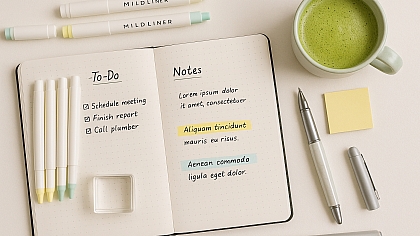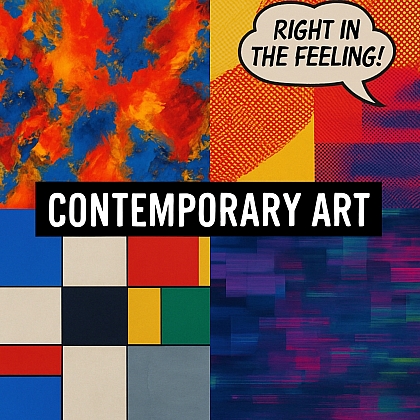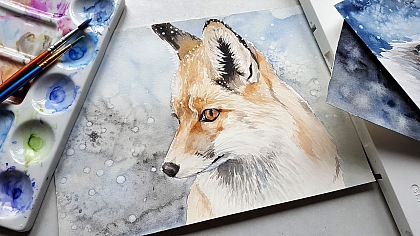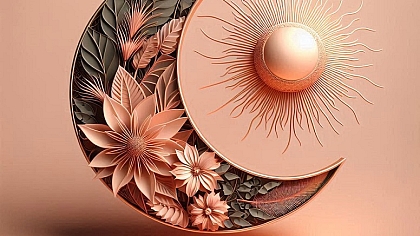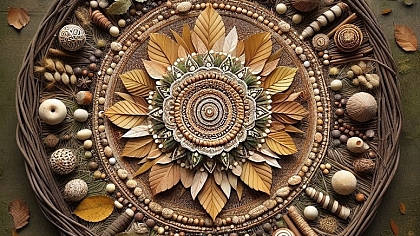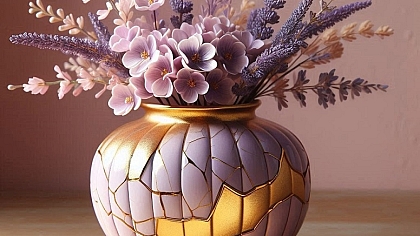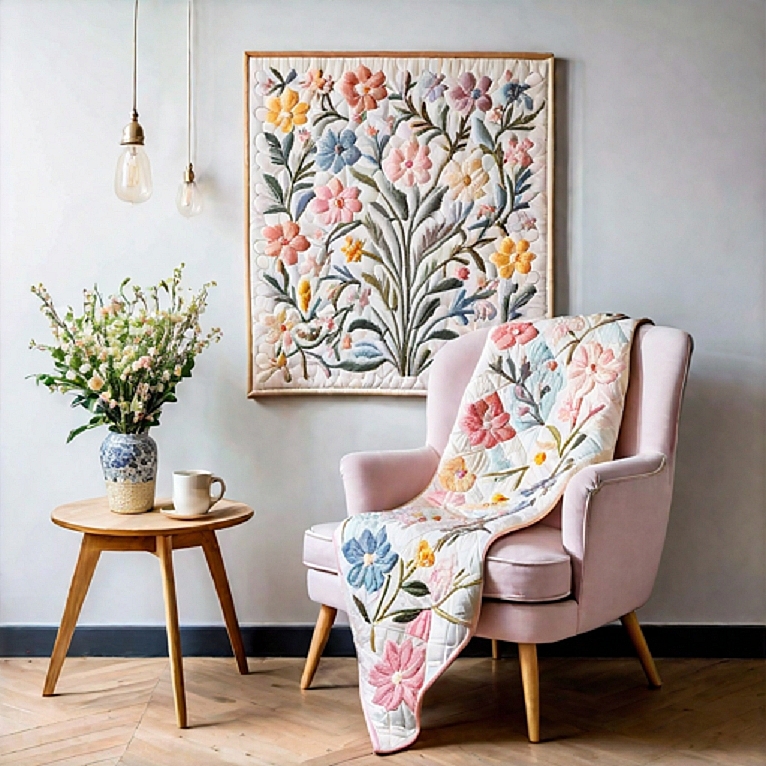
Artful Quilting: Beyond the Basics, Innovative Quilt Designs
Quilting, a time-honoured craft that has adorned homes for generations, has transcended its utilitarian origins to become a rich and expressive art form. The traditional techniques of quilting have laid a solid foundation for creativity, serving as a canvas for innovative designs that push the boundaries of the craft.
Let's dive into the evolution of quilting as an art form, its traditional techniques, and the exciting realm of possibilities that emerge when quilters venture into the realm of creativity.
Definition of Artful Quilting
Artful quilting goes beyond the conventional definitions of quilting as a functional and decorative craft. It embraces the idea of quilts as expressive works of art, where each stitch and piece of fabric contributes to a larger narrative. Artful quilters not only master the technical aspects of quilting but also infuse their creations with personal stories, emotions, and innovative design elements.

Evolution of Quilting as an Art Form
To appreciate the depth of artful quilting, it's essential to understand the historical journey of quilting as an art form. From its humble beginnings as a practical means of providing warmth to the evolution of intricate and aesthetically pleasing patterns, quilting has undergone a transformative journey. The integration of quilting into the realm of art marks a significant shift, as quilters began to view their creations as more than just functional blankets but as pieces of art that can evoke emotions and tell stories.
This guide is for both novice and experienced quilters who seek to elevate their craft from the basics to the realm of innovation. We will explore traditional techniques, delve into unconventional methods, discuss the use of innovative materials, and offer insights into designing unique quilt patterns. Moreover, we'll discuss the intersection of quilting with art, inspiring nature and other art forms. As we navigate through these aspects, we aim to inspire quilters to view their craft as a limitless canvas for artistic expression.
Exploring Traditional Techniques
Foundation Piecing: A Time-Honoured Method
One of the cornerstones of traditional quilting, foundation piecing involves sewing fabric pieces onto a foundation material, creating precise and intricate patterns. As artful quilters delve into this technique, they discover the beauty of precision and the potential for incorporating foundation-pieced elements into more complex designs. Traditional blocks provide a solid starting point, but the artful quilter transforms them into unique visual narratives.
Appliqué: Adding Dimension and Texture
The art of appliqué, with its roots deep in quilting history, opens the door to three-dimensional design possibilities. By layering fabrics onto a base fabric, quilters can create intricate designs, adding texture and depth to their quilts. Artful quilters often experiment with various appliqué techniques, from needle-turn to raw edge, pushing the boundaries of this traditional method to introduce modern, innovative elements into their creations.
Hand Quilting vs. Machine Quilting
The choice between hand quilting and machine quilting is a fundamental decision that shapes the final appearance of a quilt. Artful quilters recognize the nuanced differences between the two approaches. Hand quilting offers a personal touch and a connection to quilting's rich history, while machine quilting allows for intricate and time-efficient designs. Exploring the interplay between these techniques, artful quilters merge tradition with innovation, creating quilts that resonate with both the past and the present.

The Role of Colour Theory in Traditional Quilting
Colour is a powerful tool in the quilter's arsenal, influencing the mood, visual impact, and storytelling potential of a quilt. Understanding colour theory is crucial for artful quilters seeking to convey specific emotions or messages through their creations. Think about the principles of colour theory and how artful quilters leverage them to evoke feelings, highlight focal points, and create harmonious or contrasting compositions in your quilts.
Considering the Mood and Theme
The intended mood and theme of the quilt play a significant role in colour selection. For example, warm colours like reds and yellows evoke energy and vibrancy, while cooler blues and greens create a sense of calm. Understanding the emotional impact of colours allows quilters to align their choices with the overall message or sentiment they wish to convey through their art.
The Importance of Contrast and Value
Creating contrast in a quilt is essential for highlighting specific elements and adding visual interest. Quilters can experiment with contrasting colours to emphasize patterns or motifs within their designs. Additionally, understanding the concept of value, the lightness or darkness of a colour, helps quilters achieve depth and dimension in their quilts. Playing with light and dark values can create stunning visual effects and enhance the overall impact of the quilt.
Auditioning Fabrics and colour Swatches
Practical considerations involve physically auditioning fabrics and colour swatches before committing to a final design. Quilters can lay out different fabric combinations to assess how they interact with each other. This hands-on approach allows for a more intuitive understanding of colour relationships and helps prevent surprises in the final quilt.
Embracing Personal Style and Intuition
While understanding colour theory provides a solid foundation, artful quilters are encouraged to trust their instincts and embrace their style. Intuition plays a vital role in colour selection, and quilters should feel empowered to experiment with unconventional colour choices that resonate with their artistic vision. The process of trial and error is inherent in the creative journey, leading to the discovery of unique colour combinations that define an artist's signature style.

Utilizing Technology for Colour Exploration
In the digital age, quilters can leverage technology to explore and experiment with colours before making physical commitments. Quilt design software and online colour palette generators allow quilters to visualize their ideas and make informed decisions about colour combinations. This integration of technology enhances the precision and efficiency of the colour selection process.
Considering the End Use and Environment
Practical considerations, such as the intended use of the quilt and its environment, should also influence colour choices. Quilts destined for specific spaces or occasions may benefit from colour schemes that complement or contrast with existing elements. Additionally, understanding how natural and artificial lighting can affect the perception of colours helps quilters make informed decisions based on the quilt's eventual display location.
In the vibrant world of artful quilting, colour selection is both a science and an art. By incorporating the principles of colour theory, considering emotional and thematic elements, and embracing personal intuition, quilters can elevate their designs from mere fabric assemblies to captivating works of art that resonate with both the artist and the viewer.
Beyond the Basics
Mixed Media Quilting: Incorporating Non-Traditional Elements
Artful quilters, eager to break free from traditional constraints, explore the realm of mixed media quilting. By incorporating unconventional materials such as beads, buttons, and even found objects, quilters add texture and visual interest to their creations. This subheading delves into the techniques of mixed media quilting, highlighting the exciting possibilities when fabric art intersects with other artistic mediums.

Improvisational Quilting: Embracing Spontaneity in Design
For the adventurous quilter, improvisational quilting offers a liberating approach. Breaking away from predefined patterns, artful quilters embrace spontaneity in design. Dive into the freedom of improvisation, from choosing fabrics on the fly to experimenting with asymmetry and irregular shapes. The result is a quilt that captures the energy of the creative process, inviting viewers to appreciate the artistry in the unpredictability.
3D Quilting: Creating Depth and Texture
Elevating quilting to a three-dimensional realm, artful quilters experiment with techniques that add depth and tactile appeal. By manipulating fabric through techniques like tucks, pleats, or trapunto, quilters create quilts that invite touch and exploration. This subheading explores the art of 3D quilting, providing insights into the techniques that transform two-dimensional fabric into a multisensory experience.
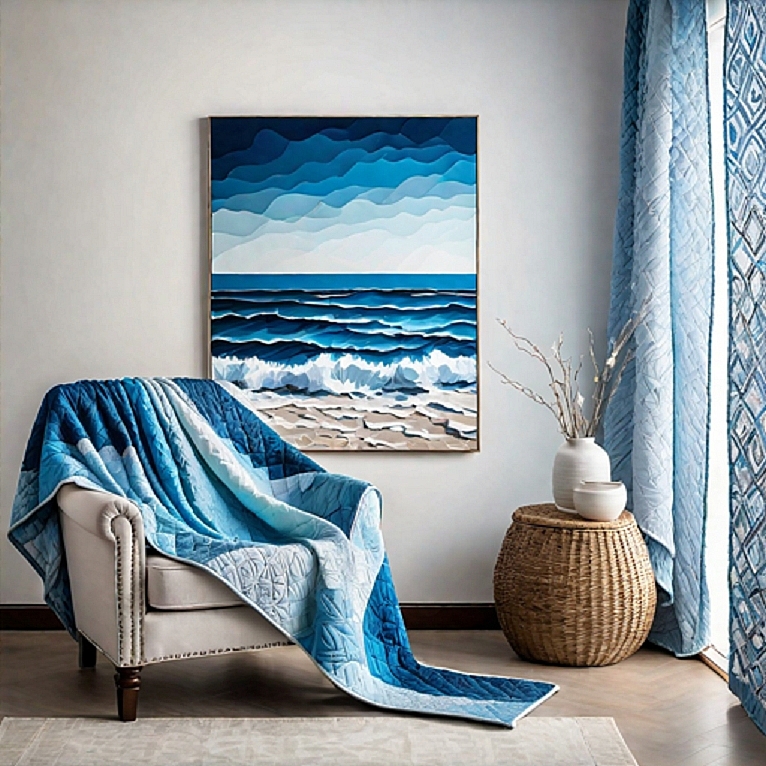
Abstract and Contemporary Quilting Styles
Departing from representational designs, abstract and contemporary quilting styles offer a canvas for self-expression and interpretation. Artful quilters push the boundaries of conventional quilt patterns, using colour, shape, and negative space to create visually striking compositions
Innovative Materials and Tools
Speciality Fabrics: Exploring Beyond Cotton
Traditionally, quilts have been crafted from cotton fabrics, but artful quilters are expanding their horizons by exploring speciality fabrics. From silk to wool, each fabric brings unique textures and qualities to the quilt. Experimental Threads: Adding a Touch of Luxury
Thread selection plays a crucial role in the overall aesthetic of a quilt. Artful quilters often venture beyond standard threads, experimenting with metallic, silk, or even hand-dyed threads to add a touch of luxury to their creations. This subheading explores the impact of thread choice on quilt design and offers guidance on selecting and utilizing threads to enhance the visual and tactile appeal of artful quilts.
Technology in Quilting: The Rise of Digital Fabric Printing
As technology advances, so does its influence on the world of quilting. Digital fabric printing opens up new possibilities for artful quilters, allowing them to turn digital designs into vibrant fabric creations. Let's discuss the integration of technology into quilting, exploring the benefits and creative opportunities that arise from incorporating digitally printed fabrics into innovative quilt designs.
Unconventional Quilting Tools and Their Applications
Artful quilters often discover inspiration in unexpected places, leading them to explore unconventional tools to enhance their craft. From everyday household items to speciality tools designed for other purposes, this subheading highlights the creative use of unconventional tools in quilting. It encourages quilters to think outside the traditional quilting toolkit and experiment with a diverse range of tools to achieve unique effects in their designs.

Designing Your Own Patterns
Understanding Quilt Anatomy: Blocks, Borders, and Binding
To venture into the realm of artful quilting, a solid understanding of quilt anatomy is essential. This subheading explores the components that make up a quilt—blocks, borders, and binding. Artful quilters delve into the intricacies of these elements, manipulating traditional structures to create visually captivating designs. Understanding quilt anatomy provides the foundation for designing unique and personalized patterns.
Software for Quilt Design: Bridging Traditional and Digital Methods
In the age of technology, software applications cater specifically to quilters, offering tools to design and visualize quilt patterns. Here we introduce the role of quilt design software, highlighting its benefits for artful quilters. By bridging traditional and digital methods, these tools empower quilters to experiment with designs, colours, and layouts before a single stitch is made.
Tips for Creating Unique and Cohesive Designs
Crafting artful quilts involves more than just technical skill—it requires a keen eye for design. This subheading offers practical tips for artful quilters on creating unique and cohesive designs. From understanding the principles of balance and contrast to experimenting with unconventional colour schemes, these tips guide quilters in expressing their individuality through their quilt designs.
Inspirations from Nature and Art
Botanical Quilts: Capturing the Beauty of Flora
Nature has long been a muse for artists, and artful quilters find inspiration in the intricate beauty of flora. The world of botanical quilts, where quilters draw from the shapes, colours, and textures of plants to create stunning and lifelike representations in fabrics. By translating the essence of nature into quilts, artists infuse their creations with a touch of the outdoors.
Art-Inspired Quilts: Translating Masterpieces into Fabric
Artful quilters often draw inspiration from the broader art world, translating famous paintings, sculptures, or even abstract art into fabric masterpieces. This subheading delves into the process of transforming artistic inspiration into quilted reality. From choosing the right fabrics to adapting techniques, quilters can pay homage to their favourite artists while infusing their quilts with a distinct artistic flair.
Finding Inspiration in Everyday Life
Inspiration for artful quilts can emerge from the most unexpected places in daily life. We encourage quilters to observe their surroundings, whether in urban landscapes or mundane objects to find beauty in the ordinary. By celebrating everyday experiences, artful quilters can inject personal stories and unique perspectives into their quilts, making each creation a testament to the artist's journey.
The Business of Artful Quilting
Showcasing and Selling Your Art Quilts
As the artful quilter evolves from creating for personal enjoyment to considering a broader audience, understanding how to showcase and sell art quilts becomes crucial. This subheading explores avenues for displaying quilts in exhibitions, galleries, or online platforms. Artful quilters can learn how to effectively present their work to the public, gaining recognition and potentially creating opportunities for sales.
Building an Online Presence: Social Media and Quilting Communities
In the digital age, the online realm offers a dynamic platform for artful quilters to connect with a global audience. This section discusses the importance of building an online presence through social media and participating in quilting communities. By sharing work, engaging with fellow quilters, and participating in online discussions, artists can establish a supportive network and gain visibility within the quilting community.
Collaborations and Exhibitions: Opportunities for Artful Quilters
Collaborations with other artists and participation in exhibitions provide unique opportunities for artful quilters to expand their reach. This subheading explores the benefits of collaborating with other creatives, whether they are fellow quilters or artists from different disciplines. Additionally, it discusses the process of submitting quilts to exhibitions, showcasing the potential for recognition and networking within the broader artistic community.
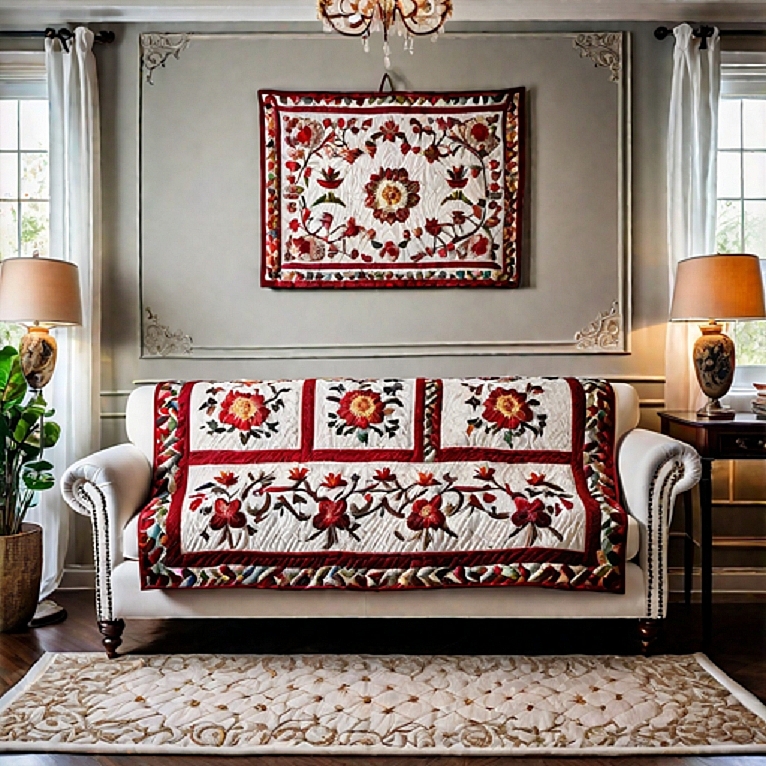
Challenges and Solutions
Overcoming Creative Blocks: Tips for Rekindling Inspiration
Artful quilters, like all artists, may encounter creative blocks that hinder their artistic flow. There are many common challenges such as creative fatigue or lack of inspiration and this provides practical tips for overcoming these hurdles. Whether through exploring new techniques, taking a break, or seeking inspiration from diverse sources, artful quilters can navigate through creative blocks and reignite their passion for quilting.
Addressing Technical Challenges in Advanced Quilting
As quilters venture into more complex and innovative techniques, they may encounter technical challenges. This subheading discusses common technical issues in advanced quilting, from mastering intricate piecing to managing unconventional materials. Solutions and tips are provided to empower artful quilters to navigate technical challenges, fostering confidence and skill development.
Balancing Artistry with Practicality: Creating Functional Art
Artful quilting often blurs the line between art and utility. There is a delicate balance between creating visually stunning quilts and ensuring their functionality. Practical considerations such as quilt size, durability, and care instructions are discussed, allowing artful quilters to create pieces that are not only aesthetically pleasing but also serve their intended purpose as functional works of art.
Recap of Key Concepts
In the journey from traditional quilting to the realm of artful designs, quilters have explored a myriad of techniques, materials, and inspirations. From understanding traditional techniques to embracing innovative materials and finding inspiration in the world around us, artful quilters have a rich tapestry of possibilities at their fingertips.
Encouragement for Aspiring Artful Quilters
For those embarking on their artful quilting journey, this subheading offers words of encouragement and motivation. Artful quilting is a personal and evolving process, and each quilter brings a unique perspective to the craft. The challenges encountered along the way are part of the creative process, we aim to inspire aspiring artful quilters to persevere, experiment, and enjoy the transformative nature of their quilting endeavours.
Looking Ahead: The Future of Innovative Quilt Designs
As the quilting community evolves, new techniques, materials, and inspirations will undoubtedly emerge. This subheading discusses the potential directions for innovative quilt designs, from technological advancements to shifts in artistic trends. The future holds endless possibilities for those passionate about pushing the boundaries of quilting as an art form.
